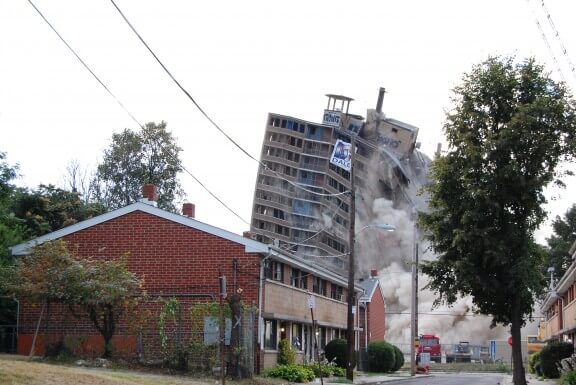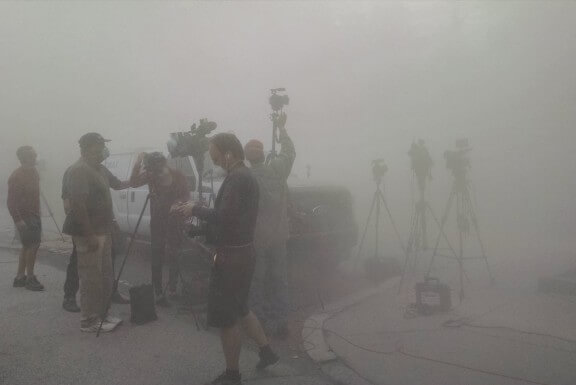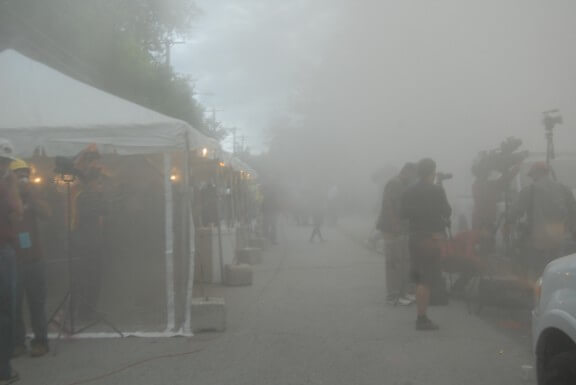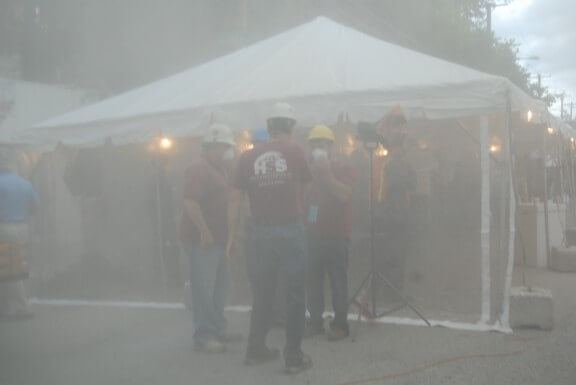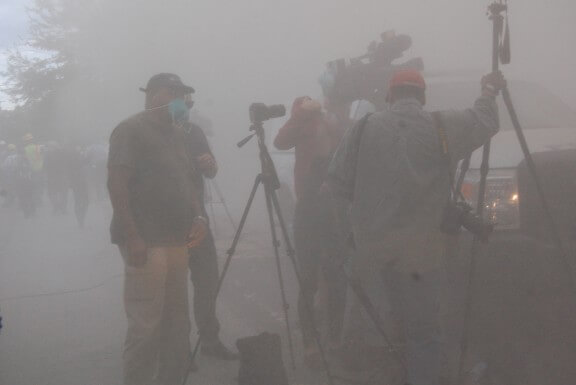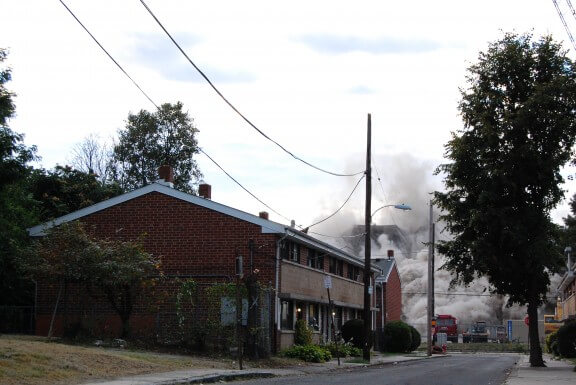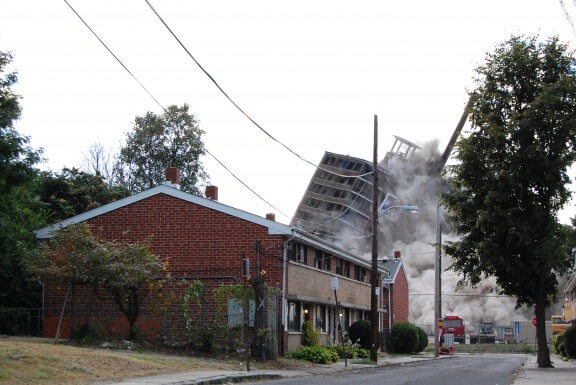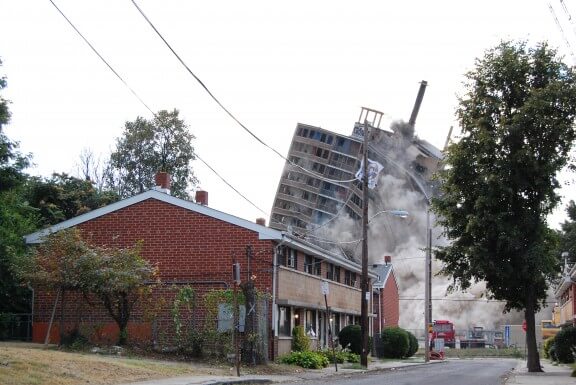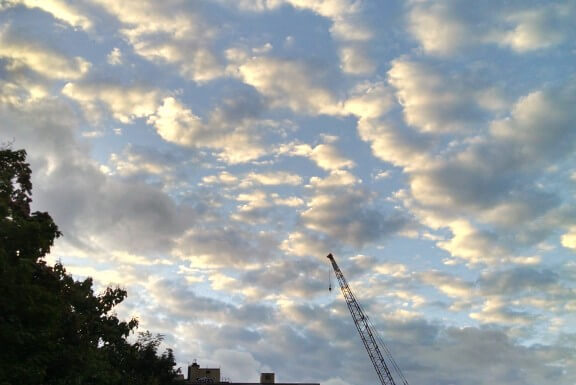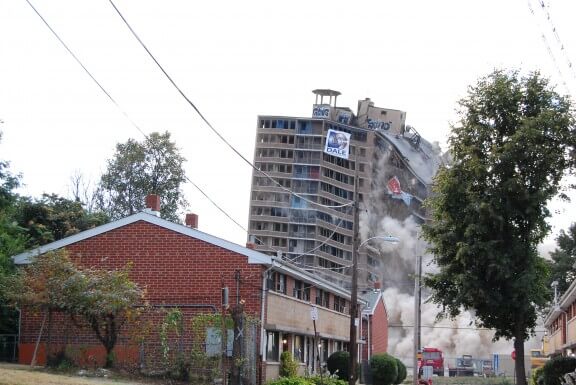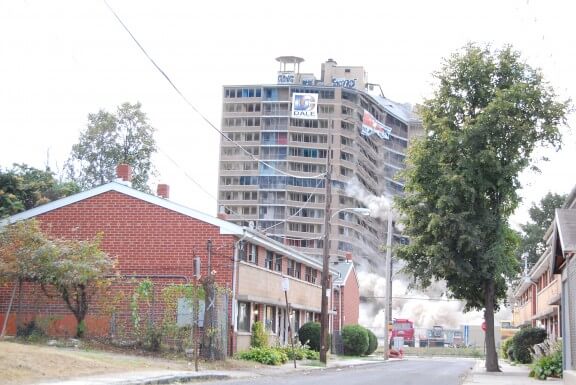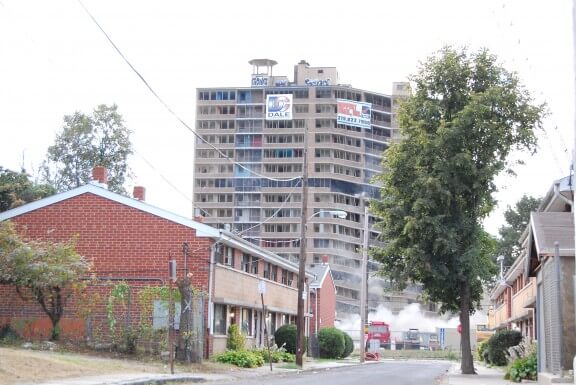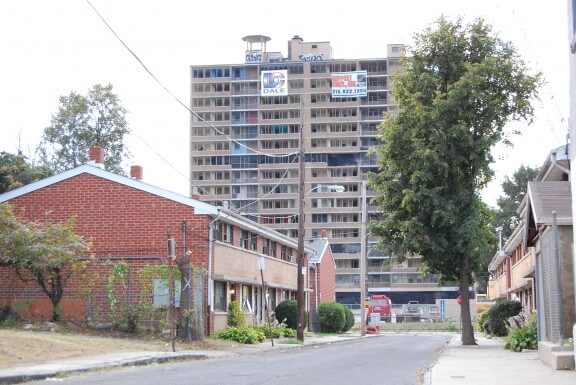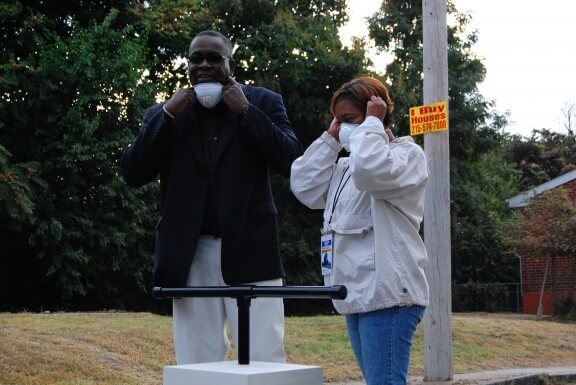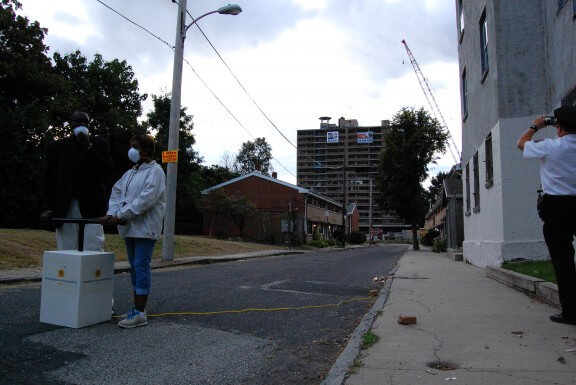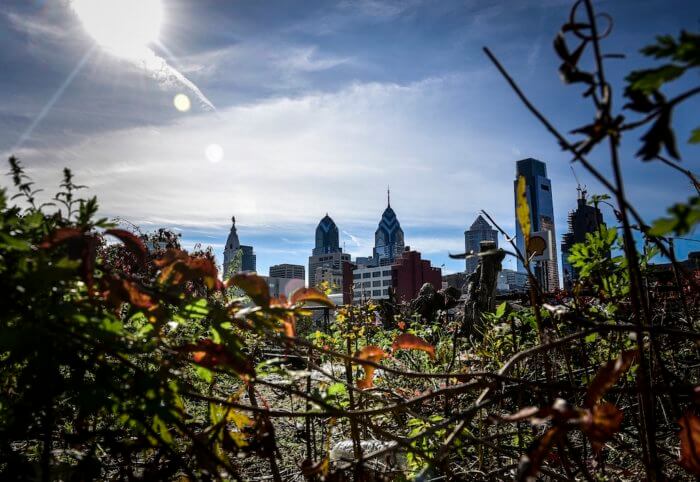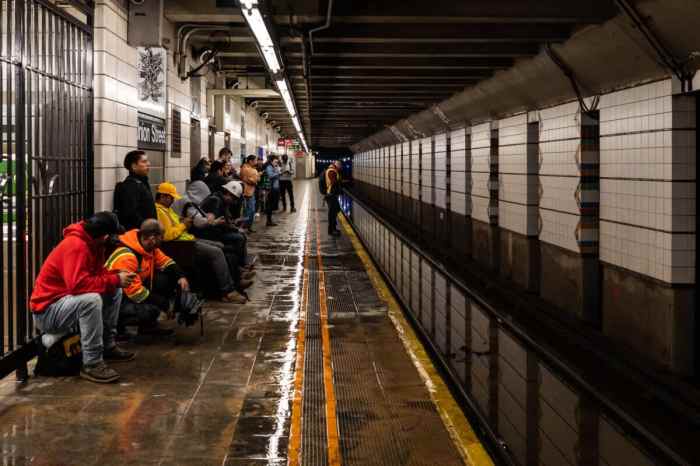 The Queen Lane apartment tower built in 1955 falls after explosives were detonated inside on the morning of Sept. 13. Credit: Sam Newhouse
The Queen Lane apartment tower built in 1955 falls after explosives were detonated inside on the morning of Sept. 13. Credit: Sam Newhouse
After years of meetings to address neighborhood concerns, searches for human remains underground (none were found), and millions of dollars in planning and research, the Philadelphia Housing Authority pushed the button on Saturday morning to blow up a 16-story high-rise housing project.
“It has taken us over three years, and approximately $1.8 million later, we are here today,” said Philadelphia Housing Authority (PHA) director Kelvin Jeremiah on Saturday morning, before the controlled implosion.
“Sixty years this development has been here. It has been a place for families, a place where children and others have grown up, and today we’re beginning the process to transform this,” he said. “Unfortunately, this development didn’t keep pace with what’s happening in the community, in the broader city. We are demolishing it to help transform this community, to build units that are more consistent with what remains in the community. We are building neighborhoods of choice, where families can thrive.”
Fifty new townhouse-style low-income apartments will be built on the site of the former tower.
City Councilwoman Cindy Bass also attended the implosion.
“This is an important moment in the history of Germantown,” she told neighbors who came to watch the demolition. “We are recognizing what was here before, so that we can move forward positively, to what’s gonna come in the future.”
Councilwoman Bass also promised that Kelly Playground, which was adjacent to the project and was destroyed during this process, will come back.
Jeremiah and Bass then pushed down a symbolic “plunger-style” detonator before the sound of a series of explosives echoed through the morning. A moment after the explosions, the building collapsed to one side, as onlookers cheered.
The scene quickly turned chaotic as a massive dust cloud from the area engulfed the VIP tent where media, construction workers, and neighbors had congregated, many of whom fled.
There were no mentions during the ceremony before the implosion of one of the most shocking concerns about this project, which held up the demolition for years — the discovery that the high-rise tower stood on top of a potter’s field from the 18th century, for “strangers, Negroes, and Mulattoes.”
However, after extensive research and excavations, it appears that the bodies buried in that field were moved long ago.
“There were no human remains that were found,” said Michael Johns, senior executive vice president for development and capital projects at PHA. “We do have some information that was uncovered when the archaeologist did their review of the history of the site … which suggests that the remains had been removed and reinterred at another graveyard.”
The federal Department of Housing and Urban Development (HUD) required the PHA to address all community concerns about the potential of human remains being under the site, including elderly neighbors who claimed they saw bones sticking out of the ground near the site of the Queen Lane tower, Johns said.
“It has taken from 2010 literally to 2014 to work through the issues and concerns of all the consulting parties,” Johns said.
Archaeologists undertook “ground-truthing” and also did X-rays of the ground, looking for anomalies underground. Where anomalies were sighted, excavation was done, but the only thing found under ground were the brick remnants of back-yard privies and other miscellaneous debris, Johns said.
Even though it appears that all human remains from the Potter’s Field were moved, the housing will be designed in a square with the former Potter’s Field area untouched in the middle, and some sort of memorial or marker is planned to satisfy community requests that PHA honor those buried in the graveyard.
 The proposed new low-rise public housing to be built on the site of the former Queen Lane tower. Credit: PHA
The proposed new low-rise public housing to be built on the site of the former Queen Lane tower. Credit: PHA
Additionally, once PHA starts clearing the debris from Saturday’s implosion in earnest on Monday, an archaeologist will be on hand in case any bones or human remains are discovered during the process, Johns said.
The construction of the 55 new units is expected to cost $22 million and take about one year.
Watch the tower implode:



